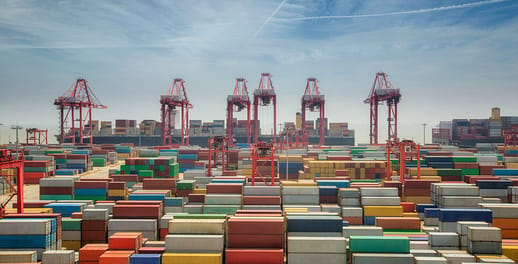As a result, retailers and consumers alike may be in for a rude price shock when they look for November’s Black Friday specials, December seasonal sales and even January sell-offs.
It is not just that retailers may find themselves paying more for imported goods – but the real danger exists that stock may not even get to the shelves on time due to port congestion. Restocking required in the wake of July’s looting in KwaZulu-Natal and Gauteng has aggravated an already challenging inventory management picture.
There are a number of contributory factors. In the midst of the COVID-19 shipping hiatus in the first half of last year, a great deal of capacity was mothballed. The subsequent economic revival has been sharper than anticipated. Shipping lines rapidly brought capacity back on-stream and prioritised additional capacity on the Asia-US trade routes which has shown the strongest continuous demand and willing to pay the highest premiums.
Capacity constraints
Capacity on the Asia-South Africa trade has consequently seen a reduction in capacity. For South Africa, this means capacity of both ships and especially containers has remained sparse and market freight rates have rocketed tenfold from July 2020 until now. This has a domino effect with regard to the final cost passed on to the consumer for goods on the shelf. Severe shipping congestion is expected to last throughout the peak sales season and into next year. Even then it doesn’t let up as this is closely followed by the Chinese New Year, and so it goes.
In consequence, South Africa’s importers are going to have to juggle three factors. They must factor in longer lead times; holding higher levels of inventory of fast moving items; and finally, in the face of increasing currency volatility and longer cash cycles, cashflows and working capital needs will need to be managed very closely. Rand volatility is likely to be around for a while in view of global nervousness regarding the tapering back of US quantitative easing (QE) measures, a tapering which at one point had been slated only next year. QE has been particularly beneficial for emerging market currencies, and its tapering would have the reverse impact.
Inventory challenges
Given that shipping congestion is not anticipated to improve any time soon, retailers and importers would be well advised to keep larger than normal inventory – and this too affects working capital and ultimately shelf prices. This represents a further danger to retailers – having placed orders for increased inventory, should it arrive late they could be left with excess stock which may need to be discounted to generate sales. Driving supply chain efficiencies will be even more challenging than usual and one’s choice of service provider(s) will be critical
There is a long-term glimmer of hope from Transnet’s recent statement that it plans to work more with private sector operators. Exponential improvements in efficiency have been demonstrated by Chinese ports which have gone this route. Port of Durban handles about 31 million tonnes of cargo compared to one billion tonnes at the biggest Chinese port by tonnage, Ningbo, with its specialist terminals able to process and trans-ship vast quantities rapidly. It is operated by a listed company. In this environment, the efficiencies are exponential compared to what Transnet is currently capable of achieving.
It may be a disappointing sales period for importers that have failed to react quickly to the market warnings around the global trade disruptions. With our expanded network we are well positioned to offer a variety of options to meet your airfreight and sea freight requirements. And for consumers, they will likely need to continue to dig deep. While Black Friday deals would usually provide some relief for many consumers, it appears that this year may be different, and some sacrifices may need to be made – miss out on certain items or pay higher prices – these are certainly not favourable options all round.
This article originally appeared in Retailing Africa.
Get Focus insights straight to your inbox
Get Focus insights straight to your inbox
Comprehensive offerings to support your business growth
Our working capital finance is designed to boost and free up cash for optimising or growing your business. We offer a number of tailored financing solutions to suit your business needs.

Trade Finance
We provide financing for the purchase of stock and services on terms that closely align with your working capital cycle. For importers, our fully integrated solution provides a single point of contact for the end-to-end management of your imports, including order tracking, the hedging of foreign exchange risk, the physical supply of product, and the provision of a consolidated landed cost per item on delivery.

Debtor Finance
Funding the needs of your business by leveraging your balance sheet (debtors, stock, and other assets) to provide you niche asset-based lending or longer-term growth funding to assist you in growing your business and creating shareholder value.

Asset Finance
Niche funding for the purchase of the productive assets and other capital requirements needed to grow your business. We alleviate the requirement for the upfront capital investment in these assets.

